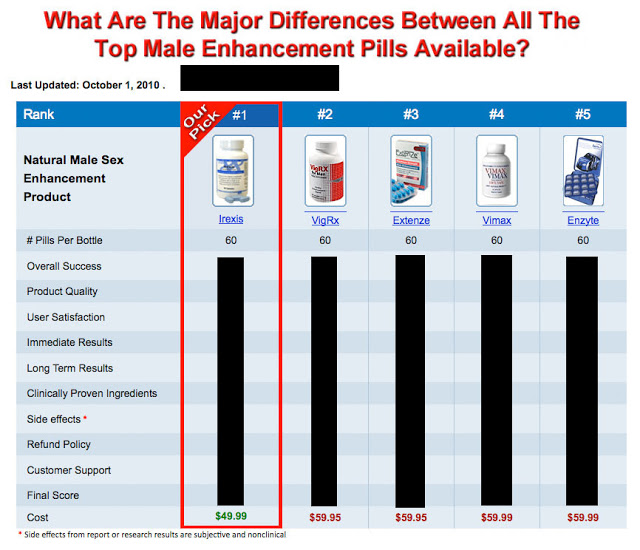Here’s an example of how the Internet and direct-to-consumer (DTC) advertising empowers consumers.
For several years now the FDA has been issuing warnings to consumers about “dietary supplements” that claim to enhance sexual performance or treat erectile dysfunction. According to the FDA, although it has issued “many alerts about these types of supplements over the past several years, … their number seems to be growing” (see “FDA Consumer Corner: Cautions about Sexual Enhancement Products“).
Using the Internet, FDA now has a much more direct line of communication to consumers. And consumers use the Internet to buy dietary supplements. This concerns drug companies and the FDA.
What concerns the FDA about these products? FDA states:
“FDA has found that many of these supposedly ‘all natural’ products actually contain ingredients that aren’t on the label, and these ingredients could lead to serious and even fatal effects.”
Is FDA talking about rat poison? That’s what Pfizer says MAY be in such products sold over the Internet (see “Was a Rat Harmed in the Filming of This Pfizer Commercial?” and “Unsafe Drugs: Is It Counterfeiters or the Supply Chain That’s the Problem?“).
Nope.
FDA isn’t saying that these products contain dangerous ingredients like rat poison. It is claiming that they contain dangerous ingredients such as the ACTIVE ingredients of VIAGRA, CIALIS, and LEVITRA — all FDA-approved Rx drugs.
“An FDA investigation of a number of these sexual enhancement supplements found that a third of them actually contained the same or similar ingredients to the class of prescription drugs that includes Viagra (sildenafil citrate), Cialis (tadalafil) and Levitra (vardenafil HCl).”
Hmmm… so if I buy one of these products, the chances are 1 in 3 that I will get the same active ingredient as found in Viagra/Cialis/Levitra?
OK, I know that these active ingredients can be dangerous even when sold as Viagra, Cialis, or Levitra (is Levitra still on the market?). But the TV commercials make these products sound pretty safe to me. In fact, the commercials tell me exactly what I should be concerned about: e.g., “Don’t take Cialis if your take prescription drugs that contain nitrates, such as nitroglycerin.”
Thanks FDA for alerting me to the fact that these dietary supplements may contain active ingredients that you have approved for human use in Rx drugs and thanks DTC advertising for educating me about the risks.
Excuse me while I search online for the best selling Sexual Enhancement Dietary Supplement.
In fact, I found a handy side-by-side comparison easily via Google search on “Sexual Enhancement Dietary Supplement” (see below). Unfortunately, I had to black out the rating symbols that appear on the original chart (which I found on JournalScopereviews.com, here) because Consumers Union (CU) lawyers informed me that the “rating symbols … are confusingly similar or identical to Consumer Reports’ trademarked icons and Ratings symbols. When consumers see your (sic) chart, they will not know if there is some connection between Consumers Union and the creator of these ratings. Obviously, there is not. The confusion this can engender is all the more pronounced given that Consumer Reports does write about dietary supplements, and has recently published information relating to sexual enhancement dietary supplements in particular. Needless to say, our views do not necessarily mirror yours, or those of the originator of the chart. This makes it still more crucial that all such confusion be avoided. To that end, therefore, we ask that you remove this chart from your blogs and refrain from using these particular Rating symbols in the future. Using some other shape or design will help ensure there is no confusion as to the source of the ratings.”
BTW, I look forward to seeing CR’s report on sexual enhancement dietary supplements. I wonder if the report includes the FDA warnings?
The CU lawyers also wanted to know how to find the original chart. It seems they are not as adept at using Google as am I!
Anyway, here’s the blacked out version of the chart:









![6 Digital Tools at the Center of Healthcare Digitalization [INFOGRAPHIC]](http://ec2-54-175-84-28.compute-1.amazonaws.com/pharma-mkting.com/wp-content/uploads/2021/04/6DigitalTools_600px-100x70.jpg)




